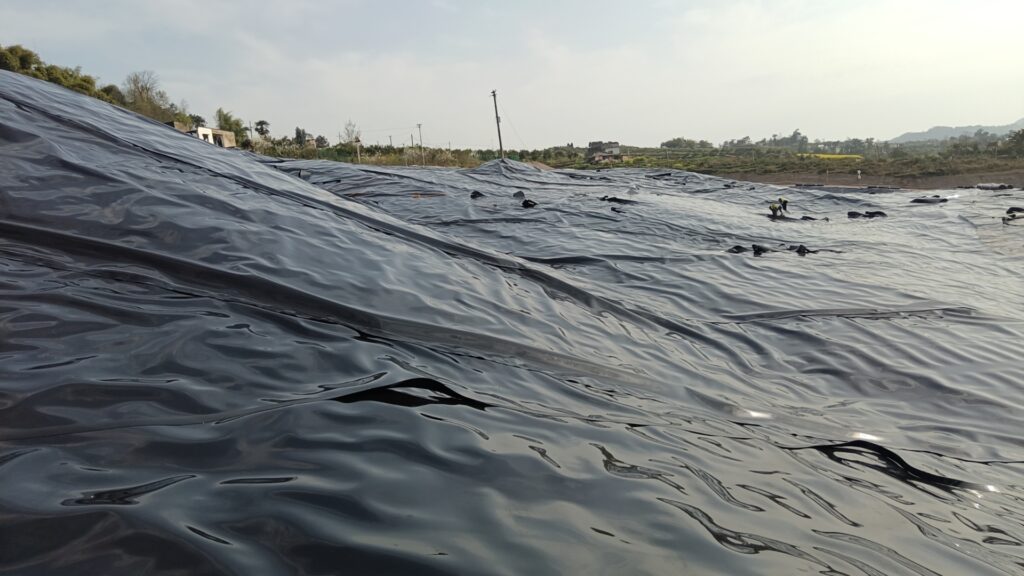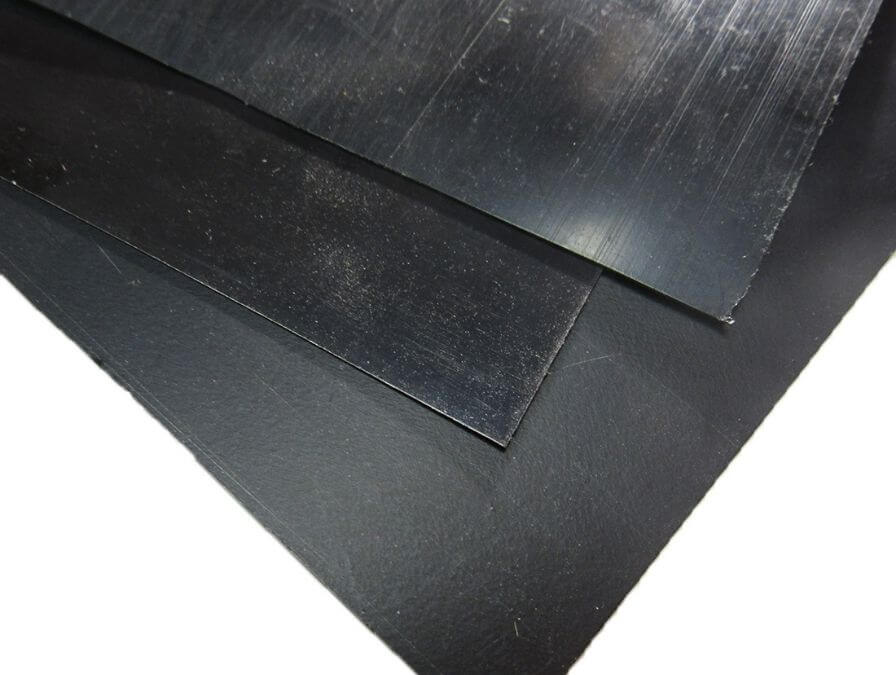Is geomembrane a geotechnical engineering material?
Yes, geomembrane is indeed considered a geotechnical engineering material. Geomembranes are synthetic materials used in various geotechnical engineering applications for their properties such as impermeability, durability, and chemical resistance. They play a crucial role in containment, waterproofing, and environmental protection in projects involving soil and water interactions.
Geomembranes are used in a wide range of geotechnical engineering applications, including:
Landfills: Geomembranes are used as liners in landfills to prevent the leaching of contaminants into the surrounding soil and groundwater.
Water Containment: They are utilized in reservoirs, ponds, canals, and wastewater treatment facilities to prevent seepage and leakage, thus conserving water resources and protecting the environment.
Mining: Geomembranes are employed in mining operations for lining tailings ponds, heap leach pads, and other containment structures to prevent the leaching of potentially harmful chemicals into the surrounding environment.
Environmental Protection: They are used in environmental remediation projects such as capping contaminated sites, covering landfills, and constructing barriers to contain pollutants and prevent their migration into the surrounding environment.
Aquaculture: Geomembranes are used in aquaculture ponds and fish farms to prevent water seepage and provide a stable environment for fish and other aquatic organisms.
Stormwater Management: They are used in stormwater management systems such as retention ponds, detention basins, and green roofs to control runoff, prevent erosion, and improve water quality.
In each of these applications, geomembranes serve as an essential geotechnical engineering material, providing solutions for containment, waterproofing, and environmental protection challenges. Their use is integral to the success and sustainability of many geotechnical engineering projects.

Why use geomembrane in geotechnical engineering?
Geomembranes are utilized in geotechnical engineering for several important reasons:
Containment: One of the primary purposes of geomembranes is containment. They provide an impermeable barrier that prevents the migration of liquids, gases, and contaminants through soil and rock formations. This is crucial in applications such as landfill liners, containment ponds, and storage facilities where preventing leakage or seepage is essential for environmental protection.
Waterproofing: Geomembranes are highly effective waterproofing materials. They are used to line reservoirs, ponds, canals, and other water containment structures to prevent seepage and maintain water levels. In civil engineering projects, geomembranes are employed to waterproof structures such as basements, tunnels, and underground storage tanks.
Erosion Control: Geomembranes can be used as erosion control measures to protect soil slopes, embankments, and shorelines from erosion caused by water flow, wave action, or other environmental factors. By providing a stable and impermeable surface, geomembranes help preserve the integrity of earth structures and prevent soil loss.
Environmental Protection: Geomembranes play a crucial role in environmental protection by containing and isolating hazardous materials and pollutants. They are used in applications such as hazardous waste landfills, industrial storage facilities, and contaminated site remediation to prevent the spread of pollutants into the surrounding soil and groundwater.
Structural Reinforcement: In certain applications, geomembranes can provide structural reinforcement to soil and rock formations. They are used in conjunction with other geotechnical materials such as geotextiles and geogrids to stabilize slopes, reinforce retaining walls, and improve the bearing capacity of foundations.
Versatility: Geomembranes come in various types, thicknesses, and compositions, allowing for versatility in design and application. They can be tailored to meet specific project requirements, whether it involves containment, waterproofing, erosion control, or environmental protection.
Durability and Longevity: Geomembranes are designed to withstand harsh environmental conditions, chemical exposure, and mechanical stresses over extended periods. They offer excellent durability and longevity, providing reliable performance and protection for geotechnical engineering projects over their service life.
Overall, the use of geomembranes in geotechnical engineering offers numerous benefits, including enhanced containment, waterproofing, erosion control, environmental protection, structural reinforcement, versatility, and durability. These advantages make geomembranes indispensable in a wide range of civil and environmental engineering applications.
What are geotechnical materials?
Geotechnical materials are materials used in geotechnical engineering, which is a branch of civil engineering focused on the behavior of earth materials. These materials are utilized in various construction, infrastructure, and environmental projects where the properties of soil, rock, and other earth materials play a significant role. Some common geotechnical materials include:
Soil: Soil is the most fundamental geotechnical material and is composed of mineral particles, organic matter, water, and air. Different types of soil, such as sand, silt, clay, and gravel, have distinct properties that influence their behavior under various loading and environmental conditions.
Rock: Rock is another important geotechnical material, especially in projects involving excavation, tunneling, and foundation construction. Rocks vary in strength, hardness, and weathering characteristics, which affect their suitability for different engineering applications.
Geosynthetics: Geosynthetics are synthetic materials manufactured for use in geotechnical and civil engineering applications. They include geotextiles, geogrids, geomembranes, geocomposites, and geocells. Geosynthetics provide solutions for functions such as soil stabilization, reinforcement, drainage, filtration, erosion control, and containment.
Aggregates: Aggregates are granular materials such as sand, gravel, crushed stone, and slag used in construction for making concrete, asphalt, and road base materials. The properties of aggregates, including particle size, shape, and strength, influence the performance of the resulting construction materials.
Clay liners: Clay liners are engineered barriers used in landfill liners, containment ponds, and other environmental applications to prevent the migration of contaminants into the surrounding soil and groundwater. They are typically composed of compacted clay layers with low permeability.
Ground improvement materials: These materials are used to enhance the engineering properties of soil and rock for construction purposes. Techniques such as soil stabilization, grouting, compaction, and soil reinforcement may involve the use of ground improvement materials such as lime, cement, fly ash, and chemical additives.
Embankment materials: Embankment materials, such as soil, rock, and engineered fill materials, are used to construct embankments for roads, railways, levees, and dams. The selection and compaction of embankment materials are critical for ensuring stability and long-term performance of the structure.
Pavement materials: Pavement materials include asphalt concrete, concrete, base courses, and subgrade materials used in the construction and maintenance of roads, highways, airports, and other transportation infrastructure. These materials must withstand traffic loads, environmental conditions, and aging effects.
These are just a few examples of geotechnical materials commonly used in engineering projects. Understanding the properties, behavior, and proper use of these materials is essential for ensuring the safety, durability, and sustainability of civil engineering works.

What are the geotechnical engineering materials?
Geotechnical engineering materials are those materials specifically relevant to the field of geotechnical engineering, which deals with the behavior of earth materials and their interaction with structures and the environment. These materials are essential for various construction, infrastructure, and environmental projects. Here are some key geotechnical engineering materials:
Soil: Soil is the primary material in geotechnical engineering. It consists of mineral particles, organic matter, water, and air. Geotechnical engineers study soil properties such as particle size distribution, density, moisture content, strength, and permeability to assess its suitability for construction projects and to predict its behavior under different loading and environmental conditions.
Rock: Rock materials are integral to geotechnical engineering, especially in projects involving excavation, tunneling, and foundation construction. Geotechnical engineers evaluate rock properties such as strength, weathering, jointing, and bedding to determine their stability and suitability for various engineering applications.
Geosynthetics: Geosynthetics are synthetic materials used in geotechnical engineering for applications such as soil stabilization, reinforcement, drainage, filtration, erosion control, and containment. Examples of geosynthetics include geotextiles, geogrids, geomembranes, geocomposites, and geocells.
Aggregates: Aggregates are granular materials such as sand, gravel, crushed stone, and slag used in construction for making concrete, asphalt, and road base materials. Geotechnical engineers consider aggregate properties such as particle size, shape, strength, and durability when selecting and designing construction materials.
Clay liners: Clay liners are engineered barriers used in geotechnical engineering for environmental applications such as landfill liners, containment ponds, and wastewater treatment facilities. They are composed of compacted clay layers with low permeability to prevent the migration of contaminants into the surrounding soil and groundwater.
Ground improvement materials: Ground improvement materials are used to enhance the engineering properties of soil and rock for construction purposes. Geotechnical engineers employ techniques such as soil stabilization, grouting, compaction, and soil reinforcement using materials such as lime, cement, fly ash, and chemical additives.
Embankment materials: Embankment materials, including soil, rock, and engineered fill materials, are used in geotechnical engineering to construct embankments for roads, railways, levees, and dams. Geotechnical engineers carefully select and compact embankment materials to ensure stability and long-term performance.
Pavement materials: Pavement materials are crucial in geotechnical engineering for constructing and maintaining roads, highways, airports, and other transportation infrastructure. Geotechnical engineers assess the properties of pavement materials such as asphalt concrete, concrete, base courses, and subgrade materials to ensure durability and performance under traffic loads and environmental conditions.
Understanding the properties, behavior, and proper use of these geotechnical engineering materials is essential for geotechnical engineers to design and construct safe, reliable, and sustainable civil engineering projects.

